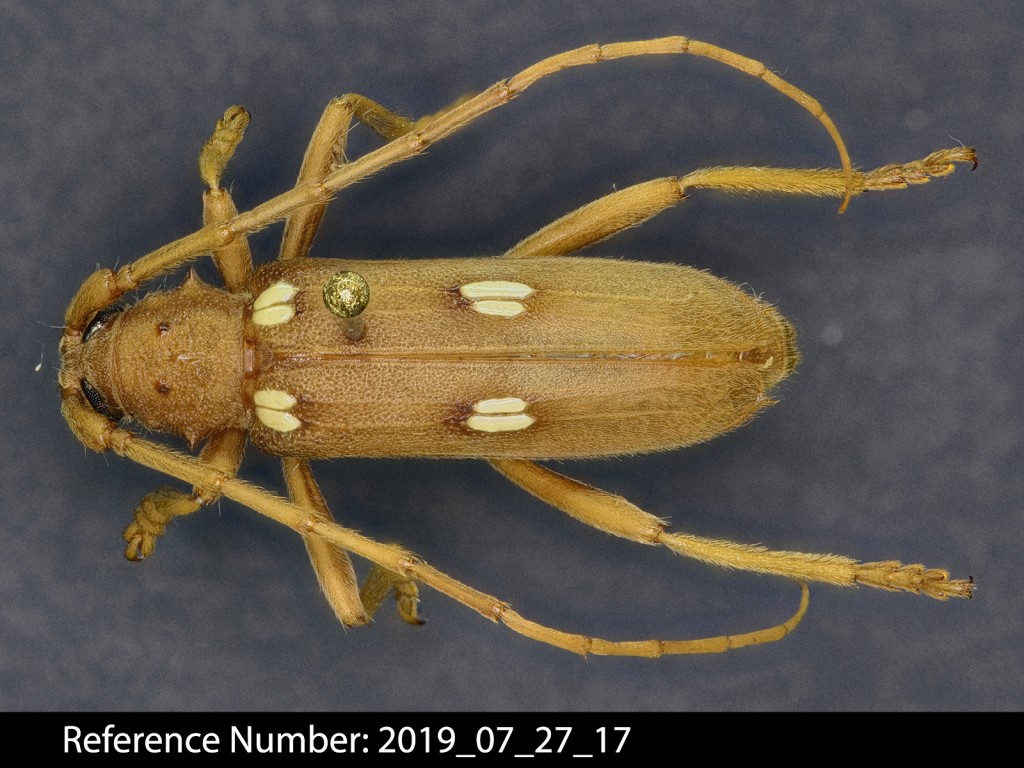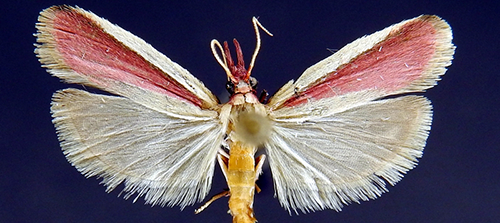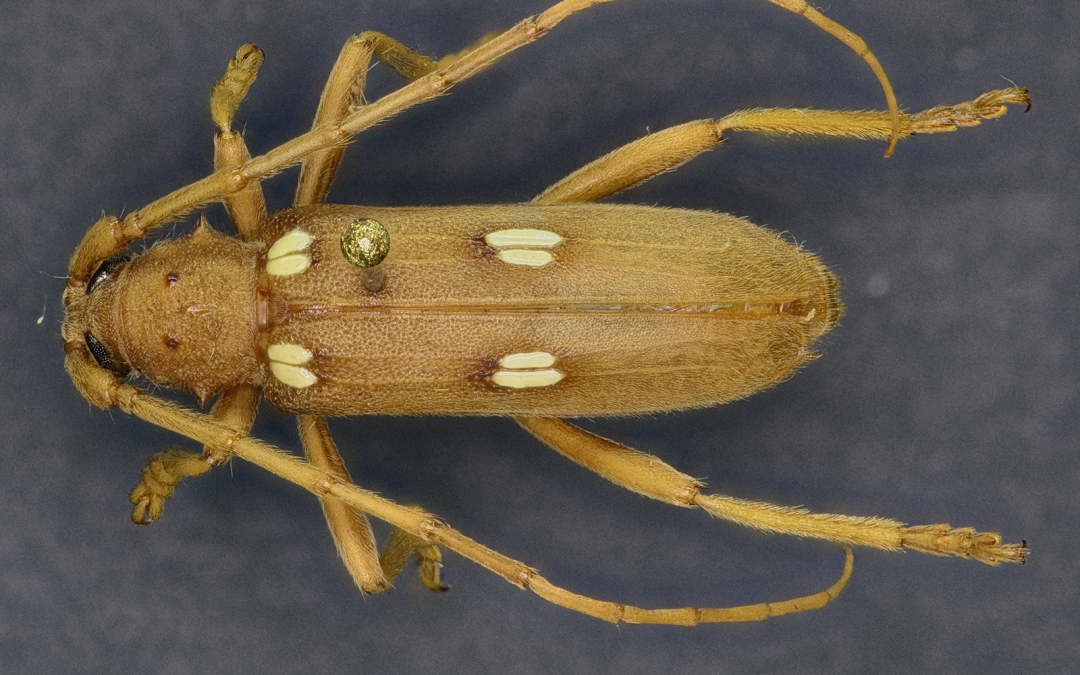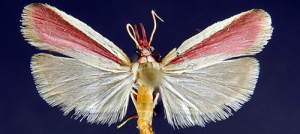Thought it might be interesting to post notes about a selected Illinois insect every week. For our first insect, I thought the one in our logo would be appropriate. The ivory-marked borer (Eburia quadrigeminata was described by Thomas Say in 1826). [He originally placed this species in the genus Stenocorus.] It is a beetle classified in the family Cerambycidae. Yes, I took this photo (by stacking many images together). For the curious – there are more than 35,000 described species in the family Cerambycidae worldwide.
Adults eat leaves and twigs. You often see them flying on hot summer days. Most adults are observed in June, July, and August. Females lay a single egg in a crack of a hardwood tree (for example, oak or hickory) and the hatched larvae tunnels in to the heartwood. It can take several years for the larvae to develop, then pupate before emerging as an adult. One adult was reported to emerge from a birch bookcase over 40 years old [Jaques, H. E. 1918. A long-lifed woodboring beetle. Proceedings of the Iowa Academy of Science 25:175.]
This species is found throughout the eastern United States (I have collected specimens as far west as Kansas). It has also been accidentally introduced into Cuba and Argentina.



